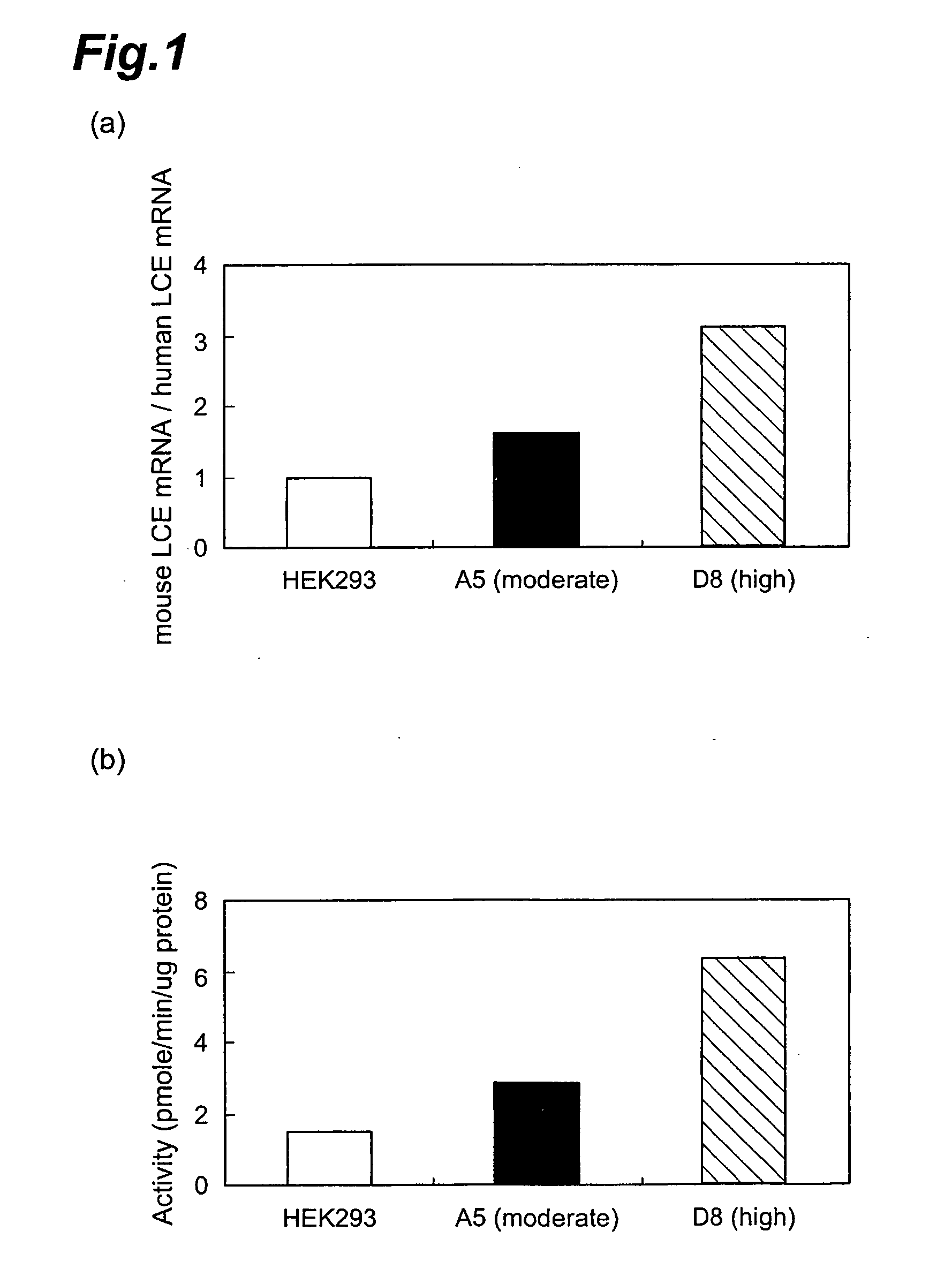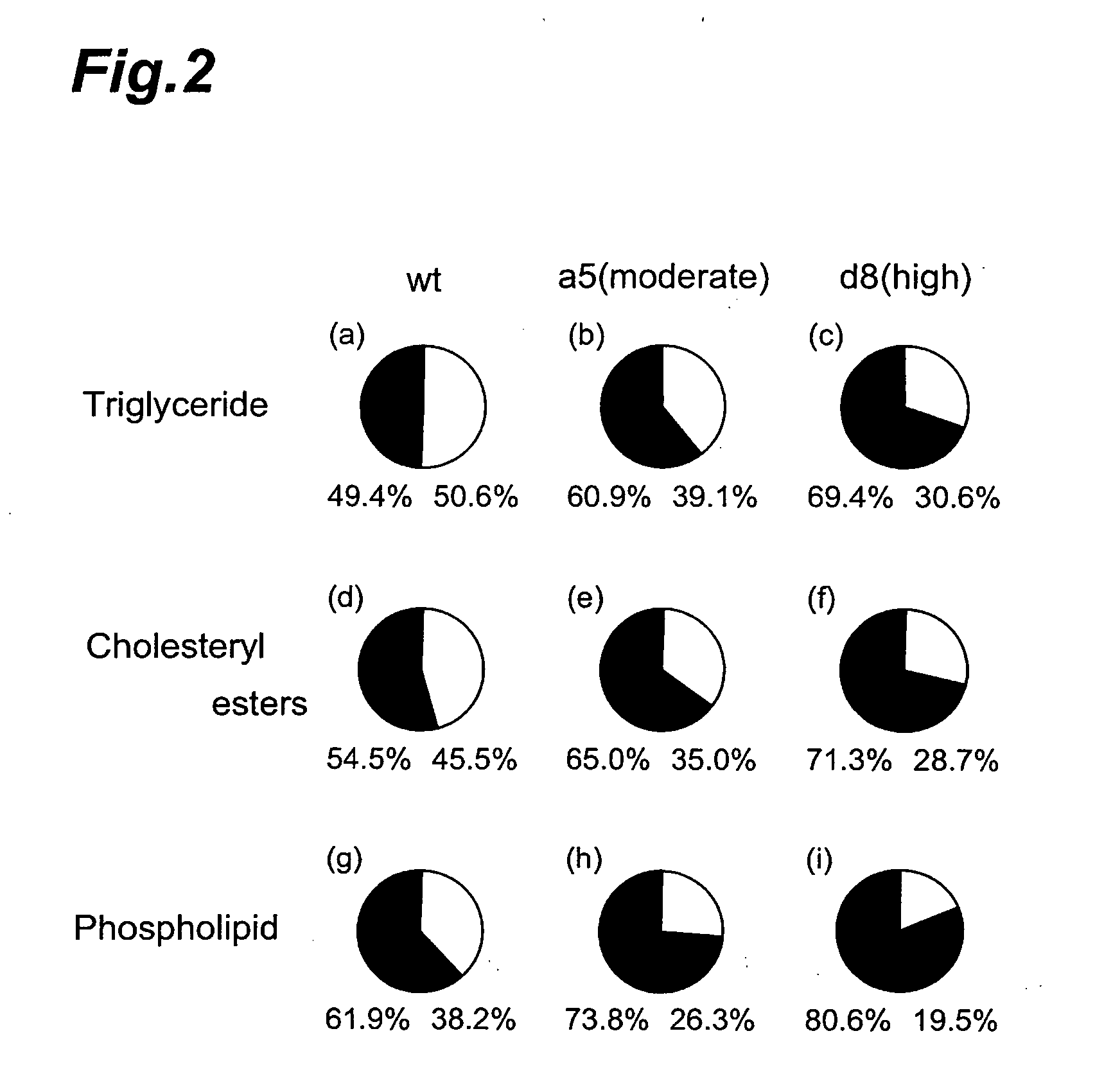Method of evaluating compound efficacious in treating obesity
a compound and efficacy technology, applied in the field of compound evaluation, can solve the problems of increasing medical costs and creating serious problems for society, and achieve the effect of preventing obesity and inhibiting fat synthesis
- Summary
- Abstract
- Description
- Claims
- Application Information
AI Technical Summary
Benefits of technology
Problems solved by technology
Method used
Image
Examples
preparation example 1
Mice Intracerebroventricularly (i.c.v) Administered with Neuropeptide Y (NPY) Y5 Agonist
[0134] A mouse model of obesity induced by administration of an NPY Y5 agonist was prepared in the following manner. Nine- to twelve-week-old male mice (C57BL / 6J: Clea Japan) were raised under conditions with a room temperature of 23±2° C. and a humidity of 55±15%, with one mouse in each plastic cage. The mice were raised under a 12 hour lightness / darkness cycle, with lights on at 7:00 am and lights off at 7:00 pm. The mice were also given free access to feed (CE-2 (25.4 wt % protein, 50.3 wt % carbohydrate, and 4.4 wt % lipid), Clea Japan) and water.
[0135] The mice were anesthetized with 80 mg / kg sodium pentobarbital (Dynabot) and a 28-gauge sterilized brain fusion cannula (Alzet Co.) was stereotactically implanted in the right cerebral ventricle. The cannula was positioned 0.4 mm behind and 0.8 mm to the side of the bregma, and to a depth of 2 mm, and was anchored vertically with respect to t...
preparation example 2
MCH-Administered Mice
[0137] A mouse model of obesity induced by administration of MCH (melanin-concentrating hormone) was prepared in the following manner.
[0138] Thirteen-week-old male mice (C57BL / 6J: Clea Japan) were raised under conditions with a room temperature of 23±2° C. and a humidity of 55±15%, with one mouse in each plastic cage. The mice were raised under a 12 hour lightness / darkness cycle, with lights on at 7:00 am and lights off at 7:00 pm. The mice were also given free access to feed (CE-2 (25.4 wt % protein, 50.3 wt % carbohydrate, and 4.4 wt % lipid), Clea Japan) and water. When the mice had adapted to their environment, they were given MHF (15.0 wt % protein, 52.4 wt % carbohydrate, 32.6 wt % lipid, Oriental Bioservice) as feed.
[0139] The mice were anesthetized with 80 mg / kg sodium pentobarbital (Dynabot) and a 28-gauge sterilized brain fusion cannula (Ale Co.) was stereotactically implanted in the right cerebral ventricle. The cannula was positioned 0.4 mm behind...
preparation example 3
DIO (Diet Induced Obesity) Mice
[0141] Eighteen-week-old male mice (C57BL / 6J: Clea Japan) were raised under conditions with a room temperature of 23±2° C. and a humidity of 55±15%, with one mouse in each plastic cage. The mice were given a high-calorie diet of MHF (18.2 wt % protein, 55.6 wt % carbohydrate, 15.5 wt % lipid) for a period of 6 months, to create an obese mouse model (DIO mice). In the examples, “established MFD” refers to mice raised with MHF feeding until body weight no longer increased.
[0142] Also created were DIO mice (HFD), which were the same mice given a high-calorie diet of HFD (20.8 wt % protein 38.59 wt % carbohydrate, and 32.88 wt % lipid) containing more fat than MHF.
PUM
| Property | Measurement | Unit |
|---|---|---|
| Acidity | aaaaa | aaaaa |
Abstract
Description
Claims
Application Information
 Login to View More
Login to View More - R&D
- Intellectual Property
- Life Sciences
- Materials
- Tech Scout
- Unparalleled Data Quality
- Higher Quality Content
- 60% Fewer Hallucinations
Browse by: Latest US Patents, China's latest patents, Technical Efficacy Thesaurus, Application Domain, Technology Topic, Popular Technical Reports.
© 2025 PatSnap. All rights reserved.Legal|Privacy policy|Modern Slavery Act Transparency Statement|Sitemap|About US| Contact US: help@patsnap.com



